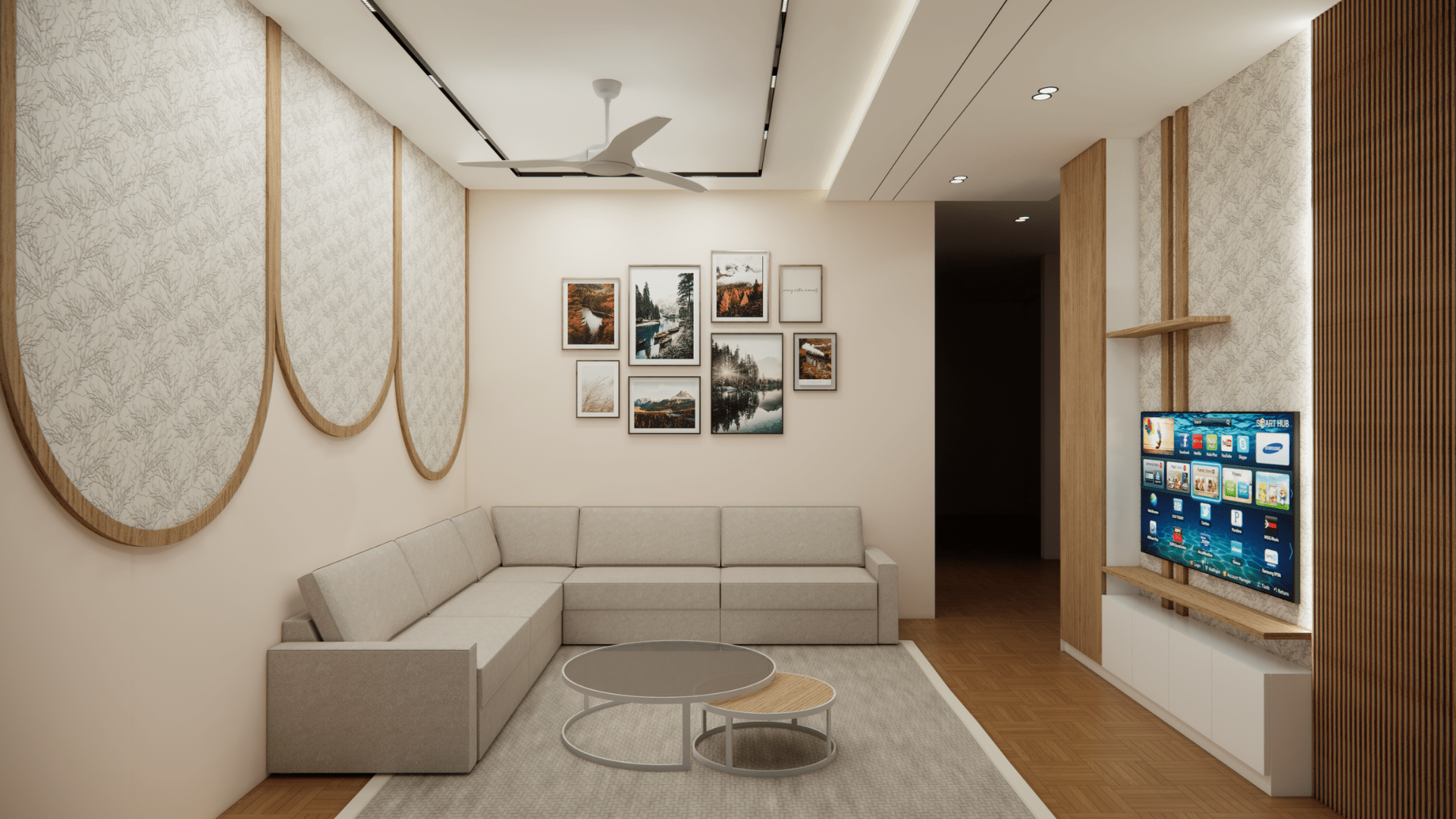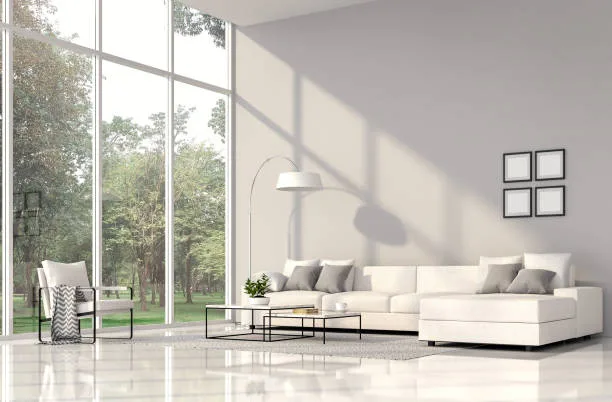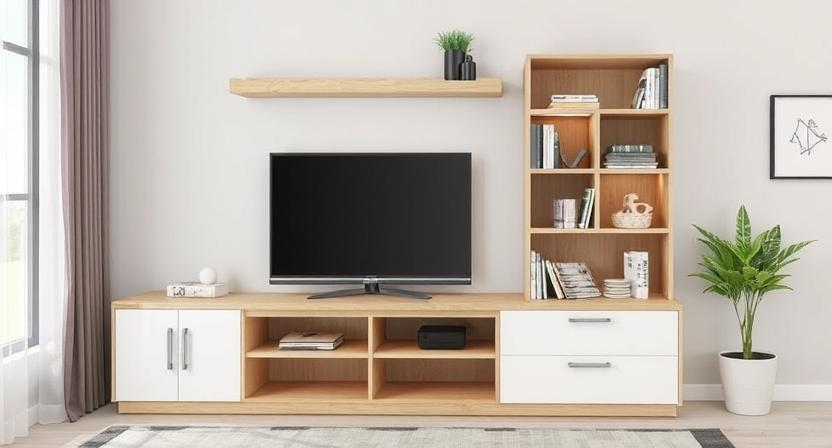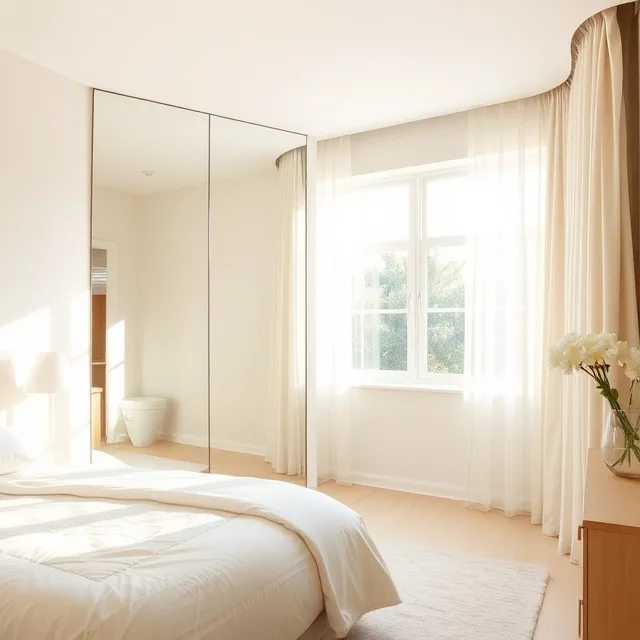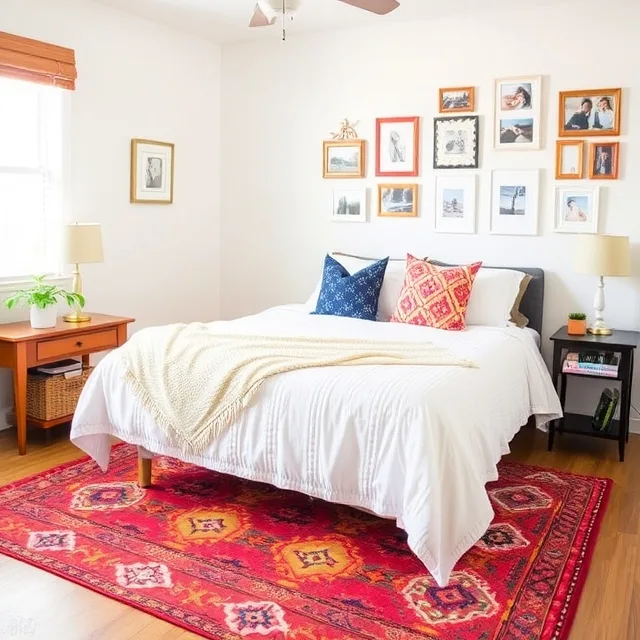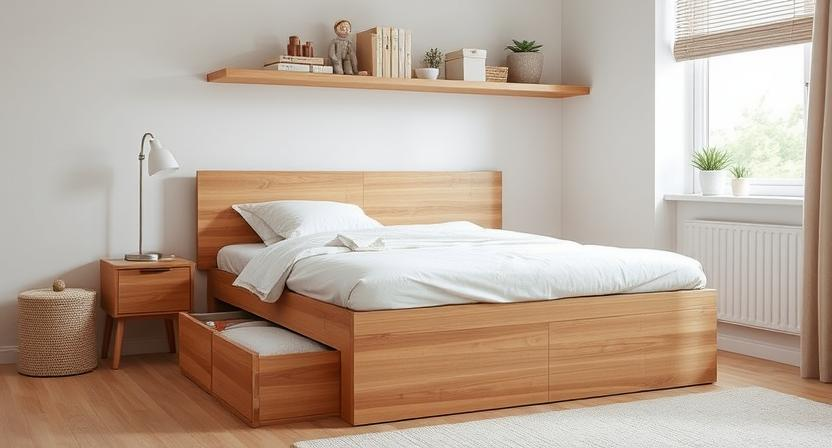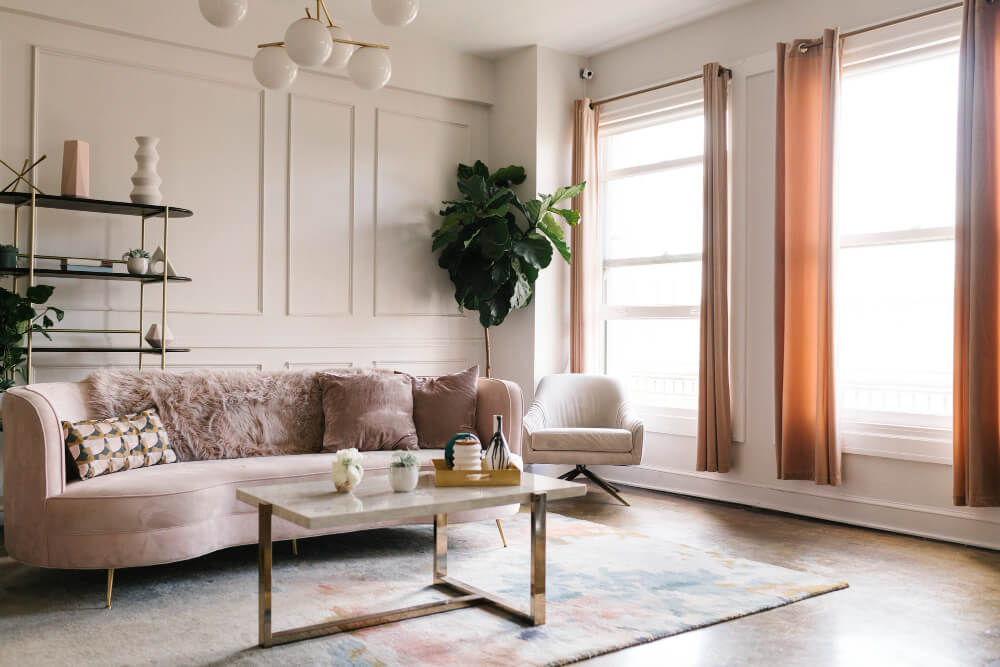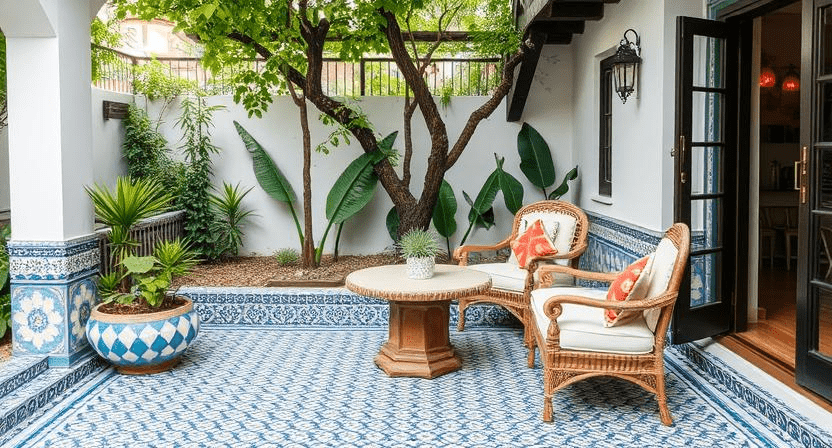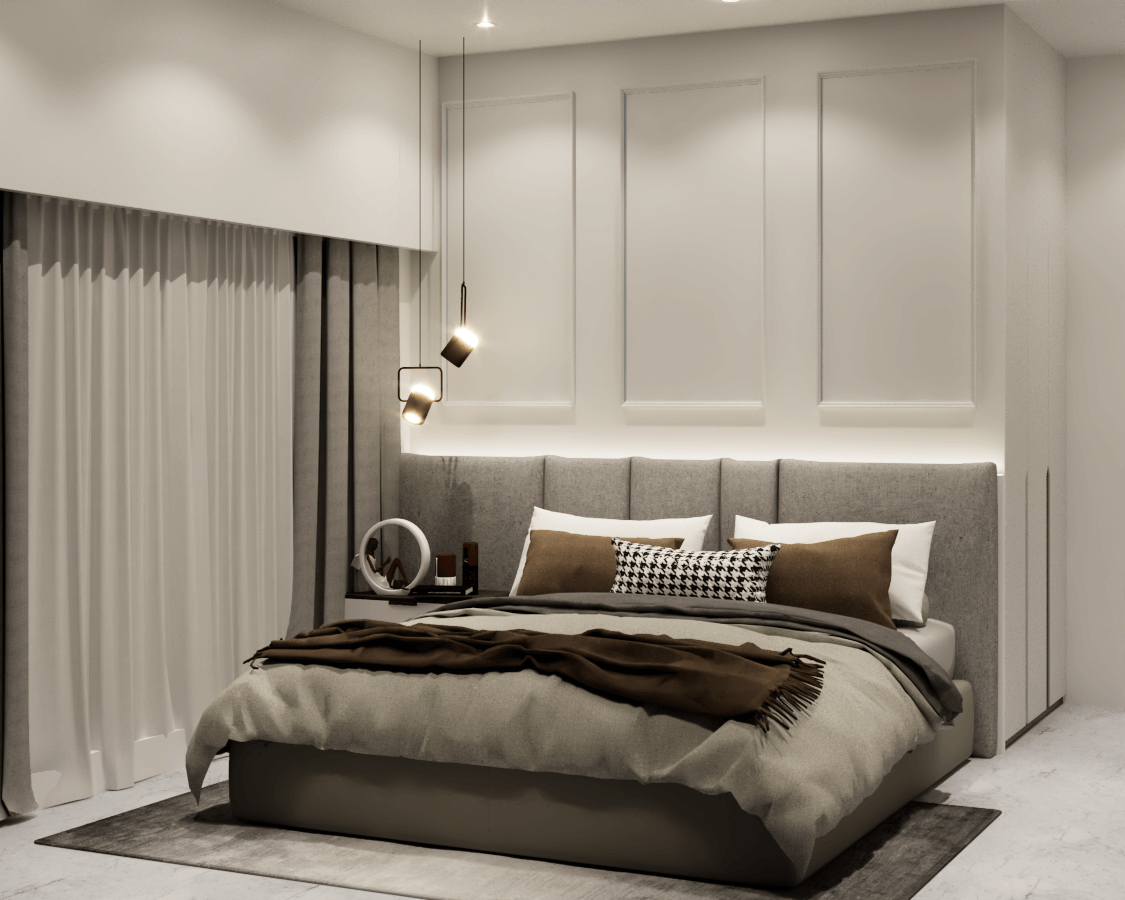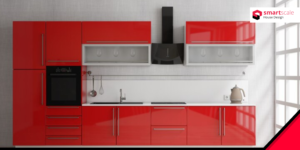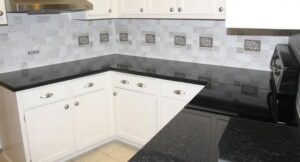Designing a beautiful home doesn’t always require a big budget or a large space. With some creativity and smart planning, you can make your small home look stylish, cozy, and well-organized all without spending a lot of money.
In this blog, we’ll share easy and affordable interior design ideas perfect for small homes in low budget. Whether you’re living in a compact apartment or a small independent house, these tips will help you transform your space on a low budget.
1. Use Light Colors to Make Rooms Look Bigger
Light colors work like magic in small homes. Shades like white, off-white, light grey, pale blue, and soft pastels reflect natural and artificial light. This creates a brighter and more open feel as if your room has more space than it actually does.
Why it works: Dark colors absorb light and can make a room feel smaller and heavier. Light colors do the opposite they bounce light and visually expand the walls.
Pro Tip: Paint your walls, ceiling, and furniture in similar tones to create a seamless and airy look. Use contrast in accessories like cushions, rugs, or artwork for a balanced touch.
2. Maximize Natural Light
Sunlight not only makes your home cheerful, but it also makes small spaces feel larger. If your windows are covered with heavy or dark curtains, you’re missing out on this free and natural design advantage.
What to do:
Avoid blocking windows with furniture.
Use sheer or light-colored curtains that allow light to pass through.
Clean your windows regularly so maximum light comes in.
Budget Tip: Light cotton or polyester curtains are affordable and easily available.
Table of Contents
Toggle3. Opt for Multi-functional Furniture
In a small home, every inch counts so your furniture should do more than just look good. Multi-functional furniture saves space, reduces clutter, and gives you more flexibility.
Examples to try:
Beds with drawers: Store winter blankets, extra bedsheets, or out-of-season clothes.
Sofa-cum-bed: Works well for guests and saves you from buying an extra bed.
Foldable tables: Ideal for small kitchens or dining areas. Fold them away when not in use.
Storage ottomans: Use them for seating, footrest, and storage all in one.
Pro Tip: Buy furniture that can be easily moved or reconfigured for different uses.
4. Use Wall Space Wisely
Don’t let your walls go to waste! Vertical space is one of the most underused areas in small homes. Using it smartly can free up floor space and help with organization.
Ideas:
Floating shelves for books, plants, or kitchen jars.
Hooks and pegboards for keys, bags, cooking tools, or accessories.
Wall-mounted desks or TV units to keep the floor area open.
Tip: Match the shelf or unit color with the wall to maintain a uniform look.
5. Add Mirrors to Create the Illusion of Space
Mirrors are one of the oldest tricks in the interior design book especially for small spaces. They reflect light and objects, making a room appear almost twice its size.
How to use them:
Place a large mirror on a wall opposite a window.
Use mirrored panels on wardrobes or furniture.
Decorate with small framed mirrors in creative arrangements.
Budget Tip: Look for mirrors at thrift stores or salvage shops they’re often half the price of new ones.
6. DIY Décor for a Personal Touch
Personal touches bring character to your home and they don’t need to be expensive. In fact, homemade décor often feels more meaningful and unique than store-bought items.
Simple DIY Ideas:
Paintings or wall art using acrylic or watercolor on canvas or thick paper.
Glass jars painted or wrapped in jute as vases or pen holders.
Old clothes or fabric turned into cushion covers, table runners, or wall hangings.
Photo frames made from cardboard or wood scraps.
Tip: Search for DIY décor tutorials online for endless budget-friendly inspiration.
7. Smart Storage Solutions
Clutter can make even a large home feel small. In a small home, it becomes overwhelming fast. Smart storage is all about using hidden, vertical, and creative spaces.
Try these:
Under-bed storage boxes for less-used items.
Tall, narrow cabinets instead of wide ones.
Hanging organizers behind doors or inside wardrobes.
Hooks on the sides of shelves for bags, belts, or umbrellas.
Declutter Tip: Donate or sell things you no longer need and stick to a “one in, one out” rule.
8. Use Rugs to Define Spaces
In small or studio-style homes, it’s hard to separate spaces for different activities. Rugs can help define these areas without the cost of building walls or partitions.
Ideas:
A rug under the sofa defines the living area.
A small rug by the dining table marks the dining zone.
A runner near your bed adds coziness to the sleeping area.
Style Tip: Pick simple patterns or light colors for a less crowded feel.
9. Greenery for Freshness
Indoor plants bring life into any space. They add color, purify air, and make a home feel more lively. Even small plants in corners or on shelves can make a big difference.
Low-budget ideas:
Grow herbs like mint or coriander on your kitchen windowsill.
Propagate money plants or snake plants from cuttings in water bottles or jars.
Use tin cans or reused containers as planters decorate them with paint or twine.
Tip: Choose low-maintenance plants like pothos, spider plant, or aloe vera if you’re new to gardening.
10. Rearrange and Refresh
Sometimes, refreshing your space doesn’t need any money just a new perspective. Try rearranging your existing furniture or swapping items between rooms.
Things you can try:
Move your bed to another wall for a better layout.
Swap wall art or cushions between rooms for a new look.
Declutter and remove any unused items.
Add a pop of color with one or two new cushion covers or a plant.
Result: A completely new feel without spending a rupee.
Conclusion
Designing a beautiful small home in low budget is all about making smart choices, using space creatively, and adding personal touches. It’s not about how much you spend, but how well you plan.
With these interior design ideas for small homes in low budget, you can create a space that feels bigger, brighter, and truly yours even with limited resources.
Looking to Design Your Dream Home on a Budget?
At SmartScale House Design, we believe that even the smallest spaces can become stunning homes when designed smartly. Whether you’re working with a tight budget or limited square footage, our expert team is here to help you make the most of every inch.
We specialize in:
Affordable and space-efficient house plans
Modern and functional interior layouts
Smart storage and space optimization
Personalized design solutions based on your lifestyle and budget
From simple 1BHK layouts to compact modern homes, we offer design plans that bring your vision to life without breaking the bank. Let us help you turn your small house into a stylish, practical, and comfortable home.
Get in touch with SmartScale House Design today and take the first step toward building your dream home beautifully and affordably.

